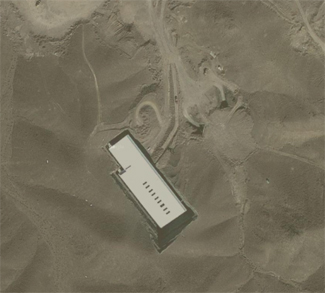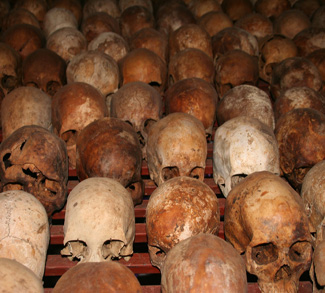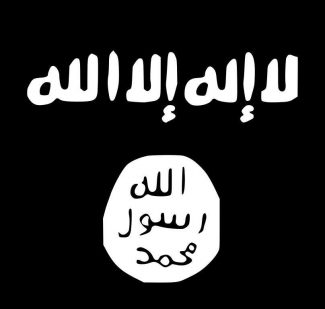Iran’s military activity, support for terrorism, and advancements in nuclear capabilities were the central focus of the US-Israel Strategic Consultative Group meeting held on June 16 at the White House, where US National Security Advisor Jake Sullivan and Secretary of State Antony Blinken hosted Israeli National Security Adviser Tzachi Hanegbi and Strategic Affairs Minister Ron Dermer. All parties reached a consensus that steps must be taken to prevent Iran from developing nuclear weapons.
Iran, a charter member of the Treaty on the Non-Proliferation of Nuclear Weapons (NPT), insists its nuclear program is for energy, not weapons. Citing Article IV of the NPT, Iran justifies its uranium enrichment activities as a right to develop nuclear energy for peaceful purposes. While claiming to honor its NPT obligations, Iran has been accused by the International Atomic Energy Agency (IAEA) of breaching safeguards by concealing parts of its nuclear program and failing to address questions regarding possible military dimensions. This led to UN Security Council sanctions in 2010 intended to compel Iran to provide the necessary data and suspend all unauthorized enrichment activities.
The IAEA, a UN body responsible for monitoring nuclear compliance, continues to play a critical role in verifying Iran’s adherence to nuclear agreements, especially following the signing of the Joint Comprehensive Plan of Action (JCPOA) nuclear deal on July 14, 2015. However, in 2019, Iran began breaching the JCPOA’s limits in response to the US withdrawal from the nuclear deal the previous year, marking a significant escalation in its sensitive nuclear activities. Concurrently, Tehran reduced IAEA access and monitoring, creating significant oversight gaps.
Initially, Iran exceeded the 300-kilogram cap of uranium enriched to 3.67%, resumed 20% enrichment, and restarted activities at Fordow. These actions, though concerning, were reversible. However, Iran has since taken more significant steps, such as enriching uranium to 60%, just short of weapons-grade, and employing more efficient centrifuges like the IR-2, IR-4, and IR-6. Tehran has also experimented with uranium metal production, essential for weaponization, and improved cascade designs for quicker enrichment level changes.
According to the IAEA, it is technically possible to create an atomic bomb with roughly 42 kilograms (92.5 pounds) of uranium enriched to 60% if the material is further enriched to 90%. Since 2020, the IAEA has uncovered significant evidence of Iran’s nuclear development, suggesting they are moving closer to developing nuclear weapons. On November 17, 2020, Iran began using advanced centrifuges at its Natanz nuclear facility. By January 4, 2021, they were enriching uranium up to 20% at Fordow facility. In February 2021, Iran enriched uranium metal and installed more centrifuges, significantly boosting their enrichment capacity. By March 2021, Iran started using IR-4 centrifuges at Natanz, and by April, they were enriching uranium to 60%, nearing weapons-grade.
In 2023, the IAEA found uranium particles at undeclared sites, Varamin and Turquzabad, raising concerns about hidden nuclear activities. By May 2024, Iran had accumulated an additional 20.6 kilograms (45.4 pounds) of uranium enriched to 60 percent purity since the last IAEA quarterly report. With 142.1 kilograms (313.2 pounds) of uranium at 60 percent purity, Iran could produce enough fuel for three nuclear weapons if further enriched. Iran’s overall stockpile of enriched uranium grew by 675.8 kilograms (1,489.8 pounds) to 6,201.3 kilograms (13,671.5 pounds). The IAEA reports Iran’s uranium stockpile is 30 times over the JCPOA limit, with enough 60% enriched uranium to potentially make an atomic bomb if further enriched to 90%.
Despite Tehran’s claims of civilian applications, it is clear that they are following a path toward weaponization. Enhanced technical capabilities and reduced IAEA oversight increase proliferation risks. Tehran’s expanded enrichment program has shortened the time needed for Iran to generate enough Weapons-grade Highly Enriched Uranium (HEU) for a nuclear weapon, a scenario known as “breakout.” Despite improved technology, Iran must operate covertly to avoid detection, slowing the process. Estimating a timeline to a “breakout” is essential to prevent Iran from developing the capability to produce fissile material faster than the international community can respond.
The April 13 attack on Israel, where Iran launched 300 missiles and drones, suggests that Iran is more willing to risk triggering a war, increasing the potential shift toward nuclear weapons if attacked. This could escalate conflict with the United States and Israel. In response to Iran’s nuclear expansion, the U.S. and Israel agreed at the Strategic Consultative Group to collaborate. National Security Adviser Hanegbi will oversee an initiative involving six reactivated Mossad groups, the Israel Security Agency (ISA), and a team specializing in intelligence and cyber fields. The Mossad groups will focus on the nuclear program and weaponization, while the ISA will counter Iranian influence campaigns within Israel. Other teams will combat cyber threats from Hezbollah and the Houthis.
Successive US presidents, including Biden, have threatened military action to stop Iran from acquiring nuclear weapons while expressing a preference for diplomacy. However, within the US government, there are growing calls for preventive strikes, particularly amid heightened tensions with Israel. Iran’s technical prowess is now irreversible, and its nuclear infrastructure is more resilient, being dispersed and harder to hit. Military strikes would only temporarily hinder progress and could potentially drive Tehran toward weaponization.
The current administration does not appear to be deviating from its 2022 US Defense Strategy blueprint, which states that Washington will “pursue diplomacy to ensure that Iran can never acquire a nuclear weapon, while remaining postured and prepared to use other means should diplomacy fail.” This suggests that, barring a nuclear ‘breakout’ and absent a diplomatic breakthrough, the U.S. will continue to lean heavily on sanctioning Tehran.
Elsewhere, House Foreign Affairs Committee Chairman Michael McCaul and other members have urged Secretary of State Antony Blinken to end sanctions waivers for nuclear cooperation with Iran. They argue that continuing these waivers undermines US nonproliferation and national security, especially given the potential benefits to Russia’s Rosatom, the State Atomic Energy Corporation, and Putin’s war efforts. Stopping these waivers could help slow Iran’s nuclear development by limiting its access to international nuclear cooperation and technology. Without the exemptions, Iran could face greater difficulties in advancing its nuclear program, as it would be deprived of the resources and outside technical support that it currently benefits from.

![cc US Department of State, Wikicommons, A view of the Blue Salon at the Palais Coburg hotel in Vienna, Austria, the 19th-century, Neoclassical former palace for Prince Ferdinand of Saxe-Coburg, where most of the bilateral meetings between the United States, other P5+1 countries, European Union, and Iran took place, as well as one-on-one meetings between Secretary Kerry and Iranian Foreign Minister Javad Zarif. Secretary Kerry sat on the left side of the table, third chair from the bottom, and Minister Zarif sat directly across on the right side of the table. [State Department photo/ Public Domain] cc US Department of State, Wikicommons, A view of the Blue Salon at the Palais Coburg hotel in Vienna, Austria, the 19th-century, Neoclassical former palace for Prince Ferdinand of Saxe-Coburg, where most of the bilateral meetings between the United States, other P5+1 countries, European Union, and Iran took place, as well as one-on-one meetings between Secretary Kerry and Iranian Foreign Minister Javad Zarif. Secretary Kerry sat on the left side of the table, third chair from the bottom, and Minister Zarif sat directly across on the right side of the table. [State Department photo/ Public Domain]](https://www.geopoliticalmonitor.com/wp-content/uploads/2024/07/U.S._Nuclear_Negotiations_With_Iran-copy.jpg)


